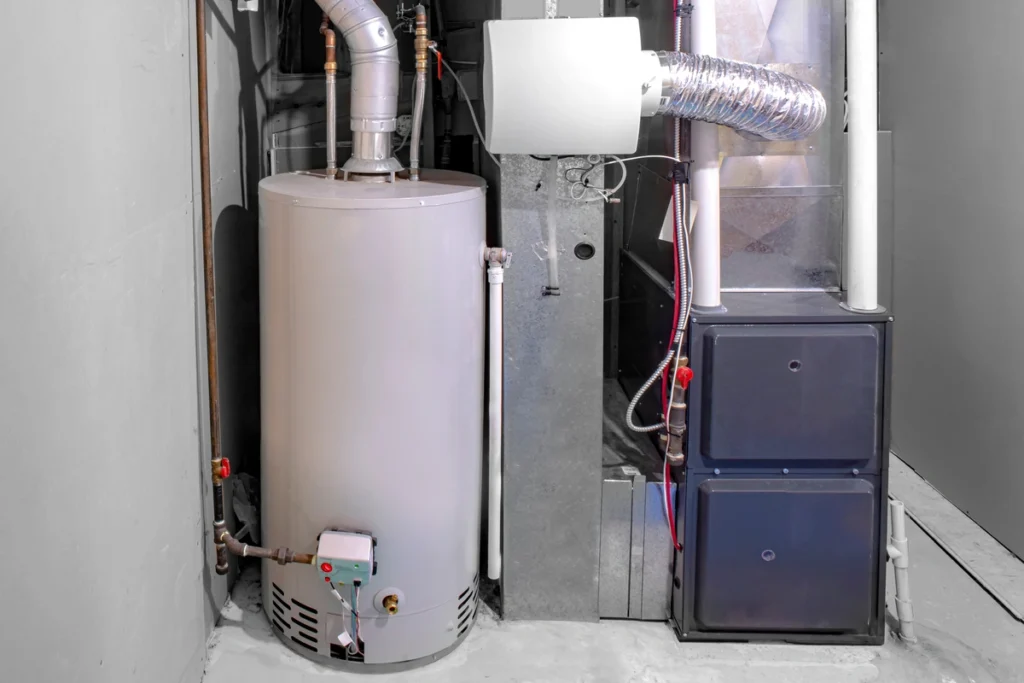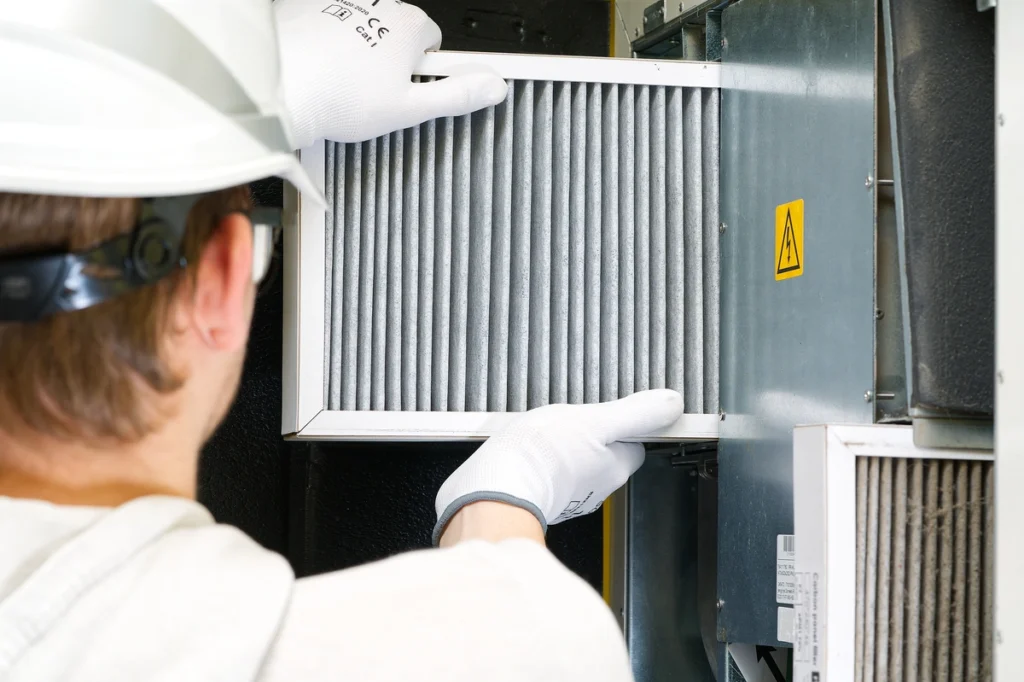Knowing the costs involved in replacing a furnace and how to budget for it can save homeowners from financial strain and uncomfortable chills. Our latest blog post offers an extensive guide on the costs associated with replacing a furnace, alongside invaluable budgeting tips that can help make the process financially manageable. Additionally, we provide practical advice on when to consider a furnace replacement and how to identify hidden costs that could impact your budget.
In this blog post, we’ll guide you through the intricacies of furnace replacement cost and more, including:
- What is a furnace
- Typical costs
- Factors affecting these costs
- When to replace your furnace
- Potential additional costs
- Common repairs
- The cost difference between repairing and replacing your furnace
- The pros and cons of DIY installation versus hiring a professional
- Tips to help you save money on your next furnace installation
🔥 What is a Furnace?

At its core, a furnace is a major component of your home’s heating system, typically powered by gas, oil, or electricity. It heats air, water, or steam, which is then distributed throughout the property to maintain a comfortable indoor temperature.
The type of furnace in your home depends on the heating medium it uses — air furnaces blow heated air through ducts, steam furnaces send steam through pipes to radiators, and hot water furnaces circulate hot water to radiators or underfloor heating systems.
Here is a list of different types of furnaces commonly used in homes and commercial buildings:
- Gas Furnace: These are the most common types of furnaces in homes and use natural gas to heat the space. They are known for their efficiency and the warmth they can provide.
- Electric Furnace: Powered by electricity, these furnaces are typically smaller and cheaper than their gas and oil counterparts and are considered safer because they do not involve burning fuel.
- Oil Furnace: Less common than gas furnaces, these are typically used in areas where natural gas is not readily available. Oil furnaces require an on-site storage tank and are generally less efficient than gas models.
- Propane Furnace: Similar in operation to natural gas furnaces, these units use propane and are an alternative in areas without natural gas service. Propane tends to be more expensive than natural gas but offers comparable performance.
💰 How Much Do New Furnaces Cost?
The cost of a new furnace generally ranges from $2,000 to $7,000, with national averages hovering around $4,000. These figures can vary based on several factors, including the type of furnace, its energy efficiency rating, brand, and the region where you live. High-efficiency models may cost more initially but can lead to significant savings on energy bills in the long run.
🚩 Factors That Influence Furnace Costs
Several factors can influence the cost of a new furnace. Key considerations include:
- Type of Furnace: Electric furnaces tend to be cheaper than gas and oil options.
- Size and Capacity: Larger homes require furnaces with a higher heating capacity, which can increase costs.
- Brand: High-end brands typically offer extended durability and better warranties but come at a higher price.
- Installation Complexity: Older homes might need updates to ductwork or venting systems, raising the total cost.
⚠️ Knowing When You Need a New Furnace
Recognizing when to replace your furnace is crucial. Signs that you might need a new furnace include:
- The furnace is over 15-20 years old.
- Increasing energy bills despite no change in usage habits.
- Frequent repairs in the past two years.
- Inconsistent temperatures or noticeable declines in heating efficiency.
- Strange noises or persistent unpleasant odors.
‼️ Potential Additional Costs to Consider
When budgeting for a new furnace, consider these potential additional costs:
- Ductwork Modifications: Necessary if your new furnace has different airflow requirements.
- Upgrading to High-Efficiency Models: Might require additional venting or electrical changes.
- Thermostat: If upgrading the furnace, an updated thermostat might be required to handle new features.
🔧 Common Furnace Repairs

Before opting for replacement, it’s worth considering if repairs might suffice. Common issues include faulty igniters, broken thermostats, clogged filters, and malfunctioning blower motors. Repairs can range from $100 for simple fixes to over $1,000 for more extensive problems.
🧐 Repairing vs. Replacing Your Furnace
Deciding whether to repair or replace your furnace can depend on the cost of repairs relative to the age of your furnace. A good rule of thumb is that if repair costs are 50% or more of the value of a new furnace, replacement might be a more cost-effective option.
🛠️ DIY vs. Hiring a Professional
While DIY furnace installation might seem like a way to save money, it comes with significant risks. Proper installation requires technical knowledge and skills, especially for gas or oil furnaces, where incorrect installation can pose serious safety risks. Hiring a professional ensures that your furnace operates safely and efficiently, and often comes with the benefit of warranties and expert advice.
💡 4 Budgeting Tips and How to Save Money
When budgeting for a new furnace, it’s important to approach the purchase with a strategic mindset to maximize both cost efficiency and heating effectiveness.
By thoroughly researching and planning your furnace purchase, you can ensure that you find a reliable system that fits both your budget and your heating requirements. To save money on your new furnace, consider the following tips:
1. Shop Around:
Get multiple quotes to compare prices and services.
2. Tax Credits and Rebates:
Look for local incentives for installing energy-efficient systems.
3. Off-Season Purchase:
Consider buying and installing a furnace during off-peak times, such as late spring or early fall.
4. Negotiate:
Don’t hesitate to negotiate pricing, especially for additional services like extended warranties or maintenance checks.
We’re Here To Help
Replacing your furnace is a significant investment, but understanding the factors involved can help you make informed decisions that benefit your comfort and your wallet. Whether you’re assessing repair costs, considering a high-efficiency upgrade, or weighing the pros and cons of a DIY install, the right knowledge and preparation will guide you to a warm and efficient home. Our team at Palmetto Air Conditioning is ready to help you determine the best furnace for your home and provide a comprehensive installation service. Reach out to us today to get learn more.
By taking the time to research and understand your options, and using the tips provided, you can navigate the complexities of furnace replacement with confidence and ensure you’re getting the best value for your investment.
